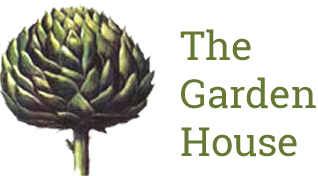Garden House talk: Artists and Gardens
Posted:30 October 2012
The next best thing to being in the garden is looking at pictures of gardens. Sue Woods’ wonderful talk on Artists and Gardens introduced us to many familiar and less familiar paintings, as well as photographic records of artists and their gardens. Sue restricted herself to 19th and 20th century examples in England and France, and even so it was packed evening.
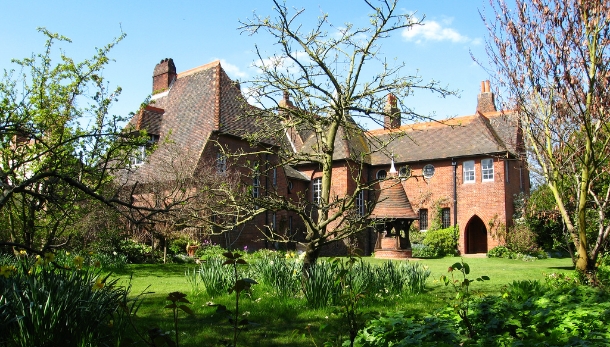
William Morriss first garden at the Red House
Beginning in the mid-Victorian era, we looked at William Morris, John Ruskin and JMW Turner. In contrast to the ornate and controlled bedding style of the time, Morris’s first garden at the Red House in Kent was romantic and informal: the roses, trellises, and dripping fruits fed into his beautiful and enduring designs for fabric and wallpaper. Colour theory was developed at the same time and heavily influenced Gertrude Jekyll’s gardening style. Her garden and Lutyens-designed house, Munstead Wood in Surrey, is not open to the public but is being restored and Sue was lucky enough to visit it and showed us some photos she had taken of its famous long herbaceous borders. Like Morris, Jekyll believed in blending the edges of a garden into the surrounding landscape and using local crafts, makers, and materials.
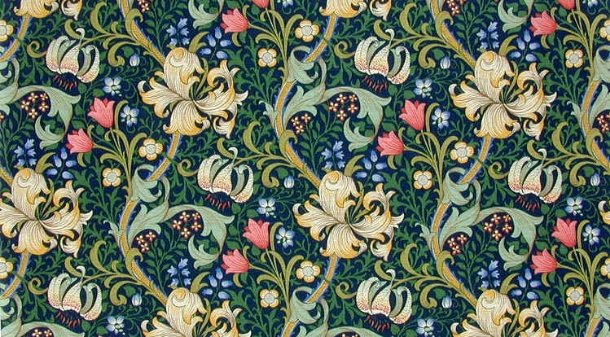
William Morris wallpaper design
Then we crossed the Channel for a splurge of Impressionist light and colour. As well as working in a looser and more informal way, these painters elevated domestic life as a suitable subject for art, which included intimate family groups, houses, and gardens. Sue touched on the influence of Japanese prints at that time, with their flattened surfaces and decorative use of colour. We heard of Monet’s wish to catch “the passing moments” of light and weather and flowers which is a beautiful way to describe the continuing pleasures of a garden.
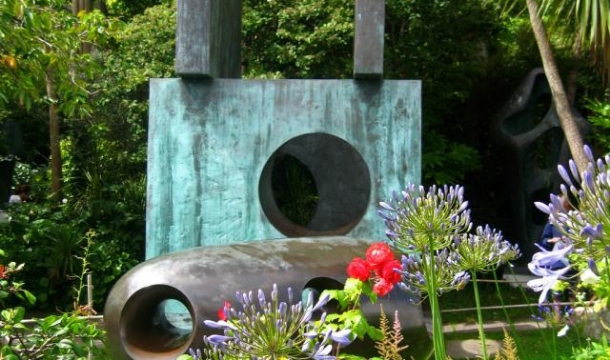
Barbara Hepworths sculpture garden at St Ives
Returning to England, we looked at the work and influence of the ‘Bloomsberries’ and ended with Henry Moore, Barbara Hepworth, and finally Derek Jarman, whose sculptural works use gardens and landscapes as a setting and a frame. I am sure Sue could have chosen many more examples of paintings and artists, but we were spoiled for choice anyway. I came away from an enlivening evening with so many vivid and inspiring pictures in my head, just the thing as we are heading into the darker and more dreary months of the year.
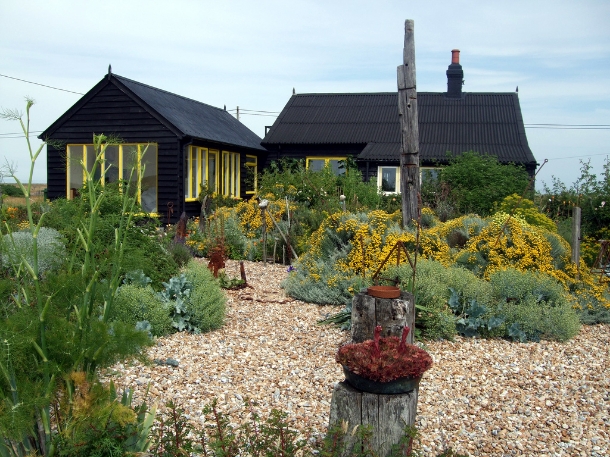
Derek Jarmans Prospect Cottage at Dungeness
Words: our thanks to Julia Widdows
